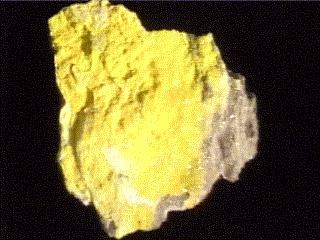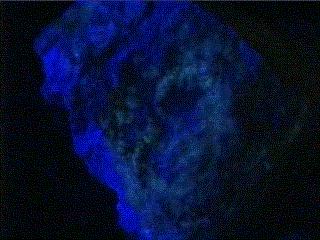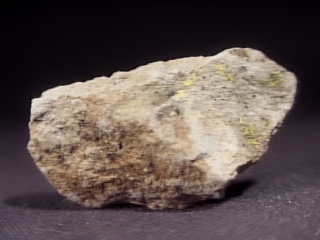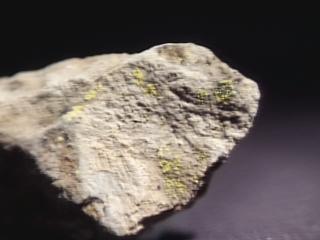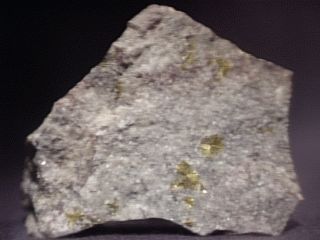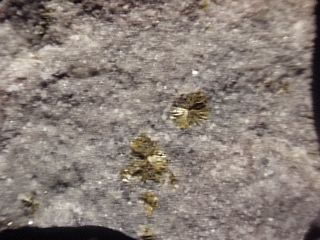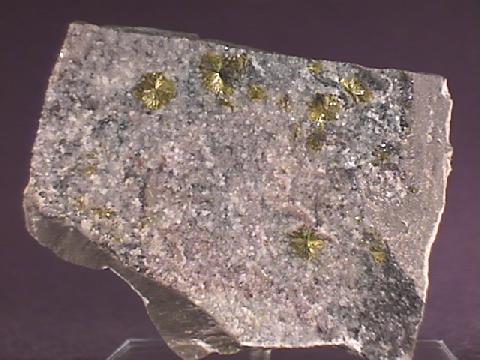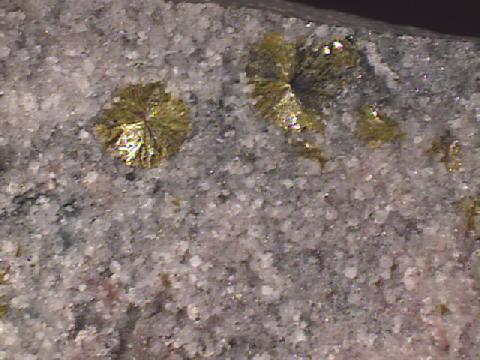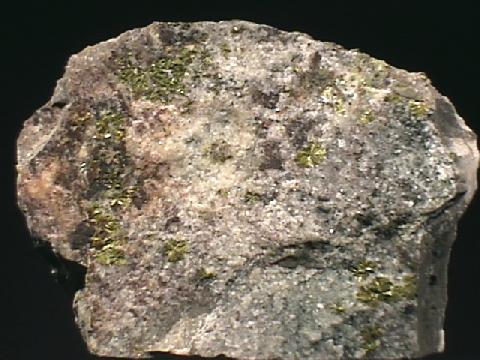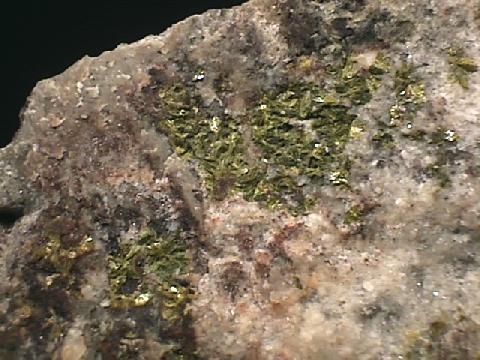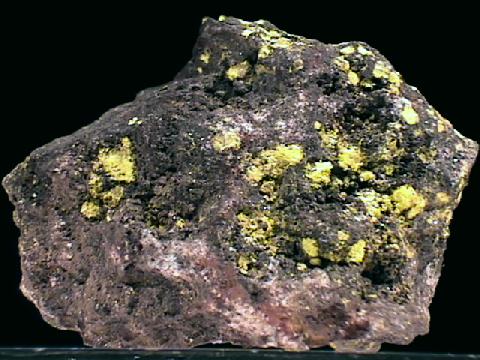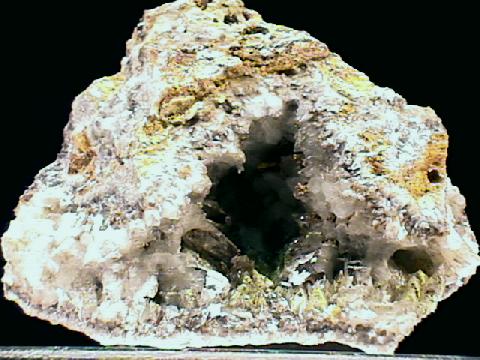 The Mineral TYUYAMUNITE
The Mineral TYUYAMUNITE
 (under shortwave uv)
(under shortwave uv)
- Chemistry: Ca(UO2)2(VO4)2- 5-8H2O , Hydrated Calcium Uranyl Vanadate.
- Class: Phosphates
- Group: Vanadium Oxysalt
- Uses: a very minor ore of uranium and as mineral specimens
- Specimens
Tyuyamunite is a rare uranium mineral that is named for the type locality from where it was first described, Tyuya Muyun, Ferghana, Uzbekistan.
Tyuyamunite is closely related to
carnotite, K
2(UO
2)
2(VO
4)
2- 1-3H
2O.
The chemistries are very similar with potassium replacing calcium and a different percentage of water, however the structures are slightly different as tyuyamunite is orthorhombic and carnotite is monoclinic.
The two minerals are often found together and are essentially indistiguishable by ordinary methods.
Meteoric oxygenated waters dissolve the uranium from primary uranium minerals and the uranium is later deposited in reducing enviroments more favorable to the formation of carnotite and tyuyamunite.
Since many deposits in sandstones are associated with petrified trees and other fossils, it is reasonable to assume that the decaying material helped produce the required reducing enviroment.
Tyuyamunite is a rare and interesting uranium mineral.
Remember, this is also a radioactive mineral and should be stored away from other minerals that are affected by radioactivity and human exposure should always be limited.
PHYSICAL CHARACTERISTICS:
- Colors are various shades of yellow, commonly greenish yellow.
- Luster is vitreous or waxy to dull or earthy.
- Transparency crystals are translucent to opaque.
- Crystal System is orthorhombic; possibly 2/m 2/m 2/m
- Crystal Habits include crusts, earthy masses, foliated and scaly aggregates.
- Cleavage is perfect in one direction, micaceous.
- Fracture is uneven.
- Hardness is 2.
- Specific Gravity is approximately 3.4 - 4 (above average for translucent minerals), higher gravity with lower water content.
- Streak is yellow.
- Associated Minerals include carnotite and other uranium and vanadium minerals in sandstones.
- Other Characteristics: radioactive and some specimens are weakly fluorescent yellow to yellow-green.
- Notable Occurrences include Tyuya Muyun, Ferghana, Uzbekistan; Wyoming, Colorado, Arizona, Nevada, Utah, New Mexico and Texas, USA.
- Best Field Indicators are color, habit, fluorescence if present, radioactivity and associations.
 The Mineral TYUYAMUNITE
The Mineral TYUYAMUNITE (under shortwave uv)
(under shortwave uv)

